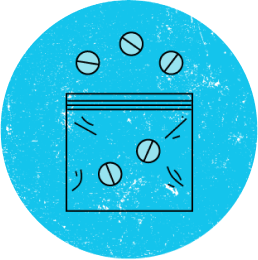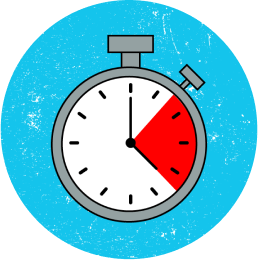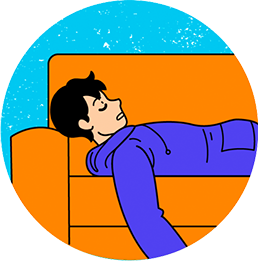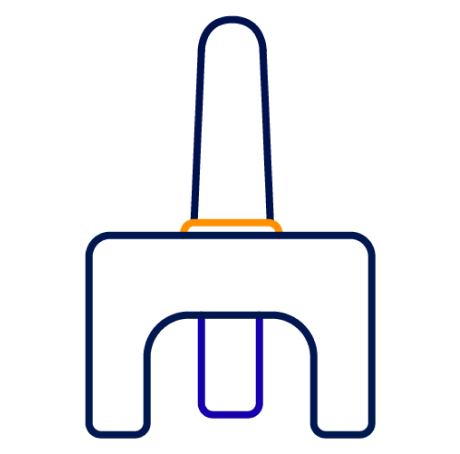Fentanyl-laced drugs are all over LA County
The drug supply in LA County has changed. Illicit fentanyl is now found in street pills, powders, and rocks, including oxys, percs, cocaine, meth, and more. It’s nearly impossible to tell if it’s in a drug, so be prepared in case of an overdose.
Overdose Risk Is High
No Matter the Drug or Plug
Laced Drug Supply
More pills, powders, and rocks are testing positive for illicit fentanyl, including 7 in 10 street-bought pills. This is causing a spike in accidental overdoses.
Time of Overdose
Overdose happens faster than you can call for help. Fentanyl is so strong, it can happen in seconds to minutes and often just looks like someone fell asleep.
Overdosing Alone
Taking drugs alone can result in a fatal overdose. The odds of surviving an overdose are much higher when someone else is around to call 911 and use naloxone.
Make a Plan Tips for Safer Use
Test your
drugs
Fentanyl test strips help better predict if your drugs are laced. Smoke or snort instead of injecting. Go slow to gauge drug strength. Learn how to use fentanyl test strips.
Be safer
alone
If you do use alone, make a plan to send for help. Have a friend check on you or call the Never Use Alone Lifeline at 877-696-1996—it’s free and confidential.
Stay safe with
friends
Take turns so someone can reverse an overdose and call 911. Use naloxone to buy time until medical help arrives.
Always have
naloxone
Know the signs to save a friend from overdose. Get naloxone now because you never know when you’ll need to use it.
How to find support
If you or someone you know is struggling with substance use, the Engagement Overdose Prevention (EOP) Hubs provide harm reduction services and peer-led education and support. Use the map below for a location near you.
Schedules and locations may change based on service needs. Please contact the EOP Hubs directly for the most up-to-date information.
Get treatment
If you or someone you know is struggling and needs treatment due to substance use, call the Substance Abuse Service Helpline or go to the Service and Bed Availability Tool.
Services available:
Does not require 24-hour care. Treatment is offered during the day, before or after work or school, in the evening, and/or on weekends.
Does not require 24-hour care. Treatment is offered during the day, before or after work or school, in the evening, and/or on weekends. Intensive outpatient services differ from outpatient by requiring more hours of treatment a week.
Refers to the use of prescribed medications (also called medication-assisted treatment or MAT) that can help reduce cravings and the symptoms of withdrawal so people can focus on treatment and recovery. MAT is often used with behavior therapies.
Refers to the medical and psychological care of patients who are experiencing withdrawal symptoms as a result of stopping or reducing use of a drug they are dependent on. Services are offered for a short period and may be provided in a community setting or in settings with 24-hour care depending on the severity.
Treatment is offered in a short-term living environment and provides 24-hour care and support.
Offers support services and counseling after treatment completion to help maintain recovery from substance use disorders.
Does not require 24-hour care. Refers to a treatment setting offering medications for addiction treatment for opioid use disorders during the day and on weekends.
What to expect
When you call, we will ask you questions about your drug use to help you decide if you need treatment.1 We will help you learn your options and find a provider who meets your specific needs.
Youth and adults can access no-cost1 substance use treatment services at any provider in the network. Recipients must be a resident of Los Angeles County and eligible for Medi-Cal,2 My Health LA, or other select county-funded programs.
SAPC complies with applicable federal and state civil rights laws and does not discriminate on the basis of race, color, national origin, age, disability, or sex, or in any manner on the basis of sexual orientation. Language assistance services are available free of charge.
- A share-of-cost may be required for some Medi-Cal eligible individuals.
- Some services and treatments require pre-authorization for eligible youth and adults.
Articles
Sources
- California Department of Public Health. (n.d.). Fentanyl testing to prevent overdose: Information for people who use drugs and healthcare providers.
- Centers for Disease Control and Prevention. (2021). Preventing opioid overdose.
- National Institute on Drug Abuse. (2022). Naloxone DrugFacts.
- Centers for Disease Control and Prevention. (n.d.). Naloxone: Family and caregivers, what you need to know about naloxone.
- County of Los Angeles Public Health. (n.d.). Los Angeles County substance use treatment services.
- County of Los Angeles Public Health. (n.d.). Fentanyl.
- County of Los Angeles Public Health. (2023). Data report: Fentanyl overdoses in Los Angeles County.
- County of Los Angeles Public Health. (n.d.). Fentanyl and overdoses in Los Angeles County: A resource toolkit for parents.
- County of Los Angeles Public Health. (n.d.). Fentanyl in Los Angeles County. Recover LA.
- County of Los Angeles Public Health. (n.d.). Substance Abuse Prevention and Control: Harm reduction.
- U.S. Drug Enforcement Administration. (2022). What every parent and caregiver needs to know about fake pills.
- DOPE Project. (2020). Fentanyl use and overdose prevention tips. National Harm Reduction Coalition.
- Substance Abuse and Mental Health Services Administration. (2023). Opioid overdose.
- Stanford University. (n.d.). Talking to your college student about alcohol: A parent/guardian guide.
- U.S. Food and Drug Administration. (2020). FDA recommends health care professionals discuss naloxone with all patients when prescribing opioid pain relievers or medicines to treat opioid use disorder.
- U.S. Drug Enforcement Administration. (2024). Year in review: DEA innovates to fight fentanyl.
